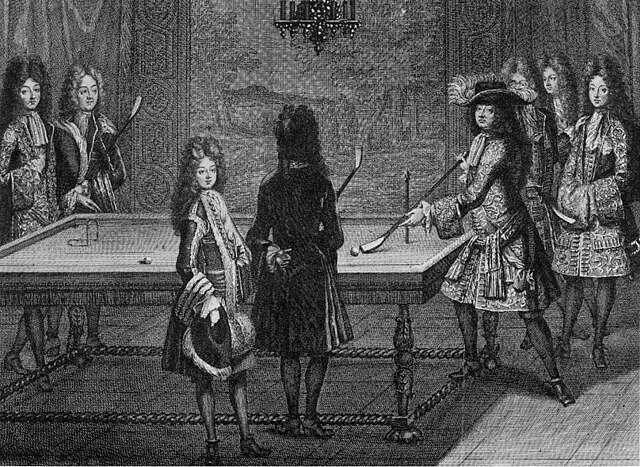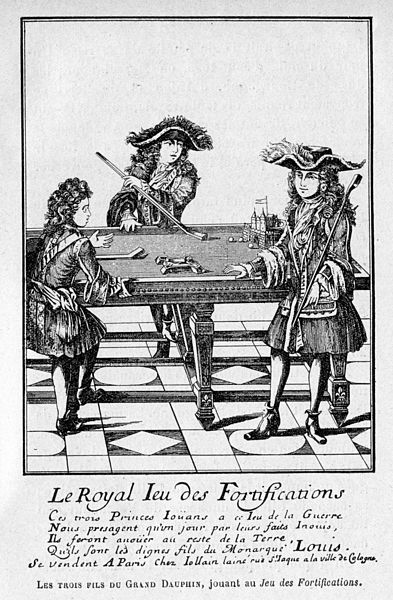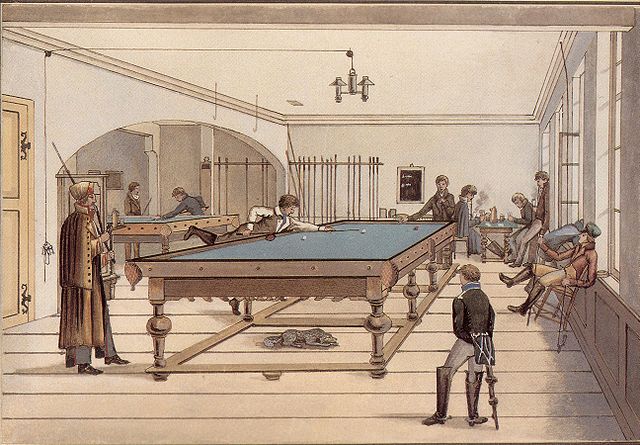Carom billiards, also called French billiards and sometimes carambole billiards, is the overarching title of a family of cue sports generally played on cloth-covered, pocketless billiard tables. In its simplest form, the object of the game is to score points or "counts" by caroming one's own cue ball off both the opponent's cue ball and the object ball on a single shot. The invention as well as the exact date of origin of carom billiards is somewhat obscure but is thought to be traceable to 18th-century France.
A carom billiard table and billiard balls
The Family Remy by Januarius Zick, c. 1776, featuring billiards among other parlour activities
A set of standard carom billiard balls, comprising a red object ball, one plain white cue ball, and one dotted white cue ball (replaced in modern three-cushion billiards by a yellow ball) for the opponent
Louis XIV playing billiards (1694)
Cue sports are a wide variety of games of skill played with a cue, which is used to strike billiard balls and thereby cause them to move around a cloth-covered table bounded by elastic bumpers known as cushions. Cue sports are also collectively referred to as billiards, though this term has more specific connotations in some varieties of English.
Interior view of billiard hall, Toledo, Ohio
Billiards in the 1620s was played with a port, a king pin, pockets, and maces.
The sons of Louis, Grand Dauphin, playing the 'royal game of fortifications', an early form of obstacle billiards with similarities to modern miniature golf
Illustration of a three-ball pocket billiards game in early 19th century Tübingen, Germany, using a table much longer than the modern type








